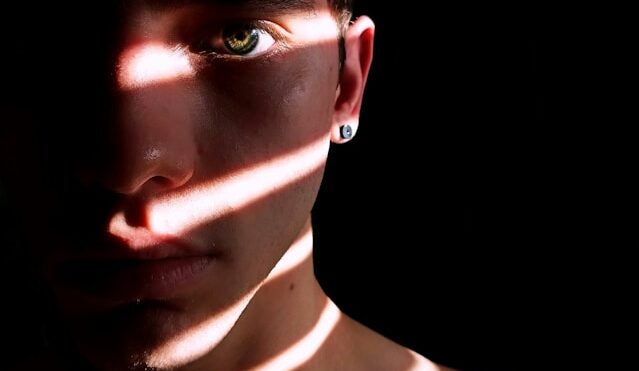There are different types of body shaming that can occur under different circumstances and in a variety of contexts. A person can face body shaming from personal relations, friends, colleagues, or from online platforms.
Mocking someone for their physical appearances can leave a harmful impact on an individual’s life. Therefore, understanding the types of body shaming is crucial for recognizing and addressing this harmful behavior effectively.
In this blog post, you will explore various types of body shaming that are common in our society.
You might also like What is Body Shaming? An Overview
And 11 Effective Ways to Respond to Body Shaming
1. Weight Related Body Shaming
This is the most frequent type of body shaming in which a person is mocked because of his or her weight. You might face negative remarks or judgment because you don’t fit the unrealistic societal beauty standards.
You may face this type of body shaming as a direct comment. In other instances, the body shamer may compare your looks with some other person. In any case the person facing body shaming may experience embarrassment, shame, and self-doubt.
2. Body Shape Related Body Shaming
Despite weight shaming, an individual can also face body shaming because of his or her body shape. This form of body shaming focuses on the overall shape of an individual’s body.
A person might face comments that may target specific areas, such as hips, stomach, or thighs. Individuals facing these comments may develop a behavior to fix certain areas of their body. This may lead to lower self-esteem and contribute to body dysmorphic disorder.
3. Fitness Related Body Shaming
Oftentimes people also face criticism because of their physical fitness level or perceived lack of exercise. Similar to other types of body shaming, this disgrace and insult is often tied to unrealistic societal standards of health and fitness.
Frequent comments targeting physical fitness may lead unhealthy exercise habits in an individual. This can negatively impact the overall well-being of a person.
4. Age Related Body Shaming
Another form of body shaming is related to an individual’s age, along with the physical changes that come with aging. Most common comments in this form are related to wrinkles or facing ageist remarks, targeting a person’s sense of clothing.
Age-based body shaming may also lead to biases and discrimination. A person who faces this form of body shaming may become anxious or self-conscious about the natural aging process. Which may also contribute to depression or other mental health issues.
5. Skin Color and Texture Shaming
Body shaming that is related to a person’s skin color or appearance can lead to ethnic division and discrimination. There is a common practice that people with different skin tones are mocked and treated differently.
Such body shaming reinforces ethnic and racial disparities and can have a broader impact on society. Individuals experiencing remarks about their body may feel societal pressure to meet certain body standards regarding skin color and texture.
6. Body Hair Shaming
This type of body shaming revolves around someone’s body hair or their grooming choices. Usually, women are criticized and body shamed if they don’t remove hair from their arms and legs.
Similar to other types, this form of body shaming often reflects societal standards about body hair. Neglecting this can lead to the feeling of shame and discomfort.
7. Clothing and Fashion Related Body Shaming
A person may face negative comments if he or she ignores fashion trends and is dressed in outdated clothes. Moreover, a person can face cloth-shaming for wearing a certain color or type of dress.
People who face clothes or fashion related shaming may feel self-conscious about their clothing choices and appearances. Such individuals may develop social anxiety and they may avoid certain clothing styles or public gatherings.
8. Pregnancy-Related Body Shaming
It is sad to see how our society has attached a natural phenomenon of pregnancy to being overweight. There are people out there who pass negative comments on someone’s body weight and associate them with pregnant women.
Such behavior not only causes mental distress to pregnant women but also to people who are not pregnant. This type of shaming can be intrusive and harmful, developing feelings of anxiety and embarrassment for a person.
9. Sexual Orientation and Gender Related Body Shaming
Oftentimes people criticize others because of their sexual orientation or gender identity. This type of body shaming reinforces discrimination and individuals may face social exclusion and distress.
10. Cultural and Ethnic Body Shaming
Cultural and ethnic body shaming is about passing negative comments about someone’s body based on their culture and ethnicity. This type of shaming often perpetuates racism and issues of cultural insensitivity.
Individuals may not only face discrimination but they may feel marginalized or devalued because of their ethnicity and culture.
Concluding Remarks
Body shaming is a multifaceted issue that manifests in various ways, each with its own impact on individuals and society. Whereas, the types of body shaming discussed in this blog post shows how someone can feel hurt when we criticize them.
However, by understanding the forms of body shaming, we can better address and prevent this harmful behavior. Combating body shaming is essential for creating a culture of respect, inclusivity, and empathy.


3 Comments
Thank you for your sharing. I am worried that I lack creative ideas. It is your article that makes me full of hope. Thank you. But, I have a question, can you help me?
Thanks for sharing. I read many of your blog posts, cool, your blog is very good.
Reading your article has greatly helped me, and I agree with you. But I still have some questions. Can you help me? I will pay attention to your answer. thank you.